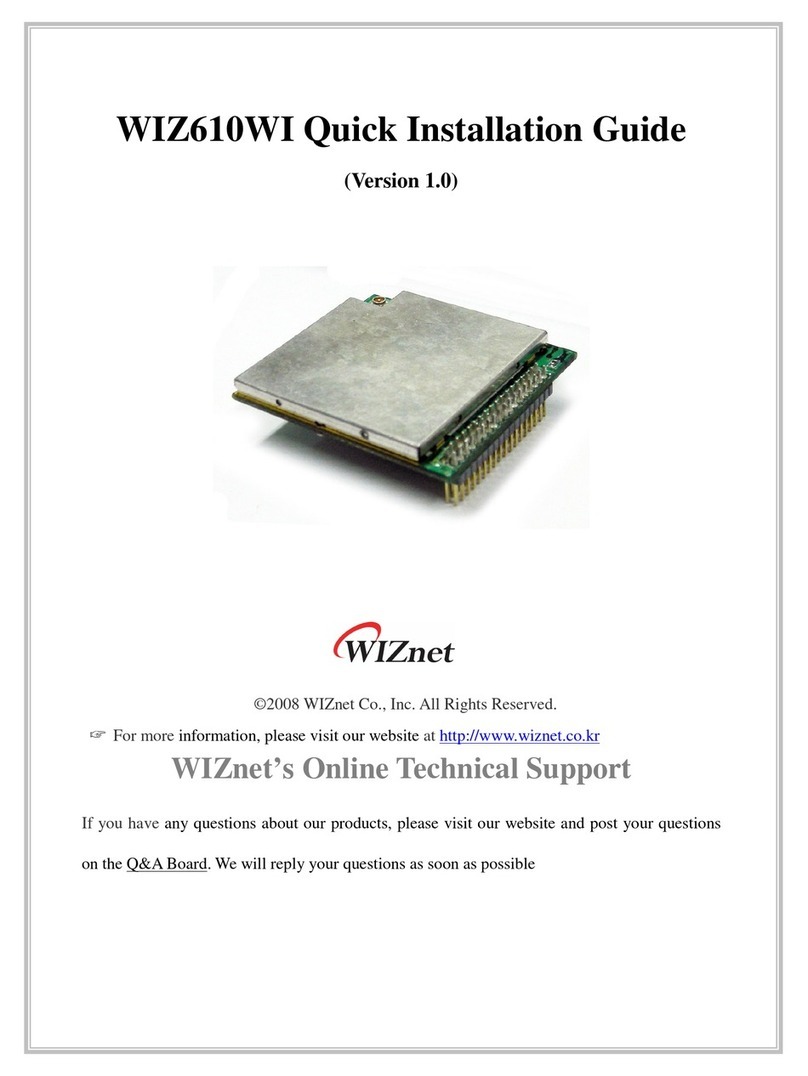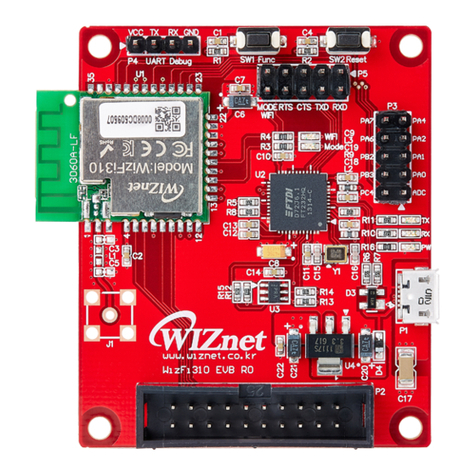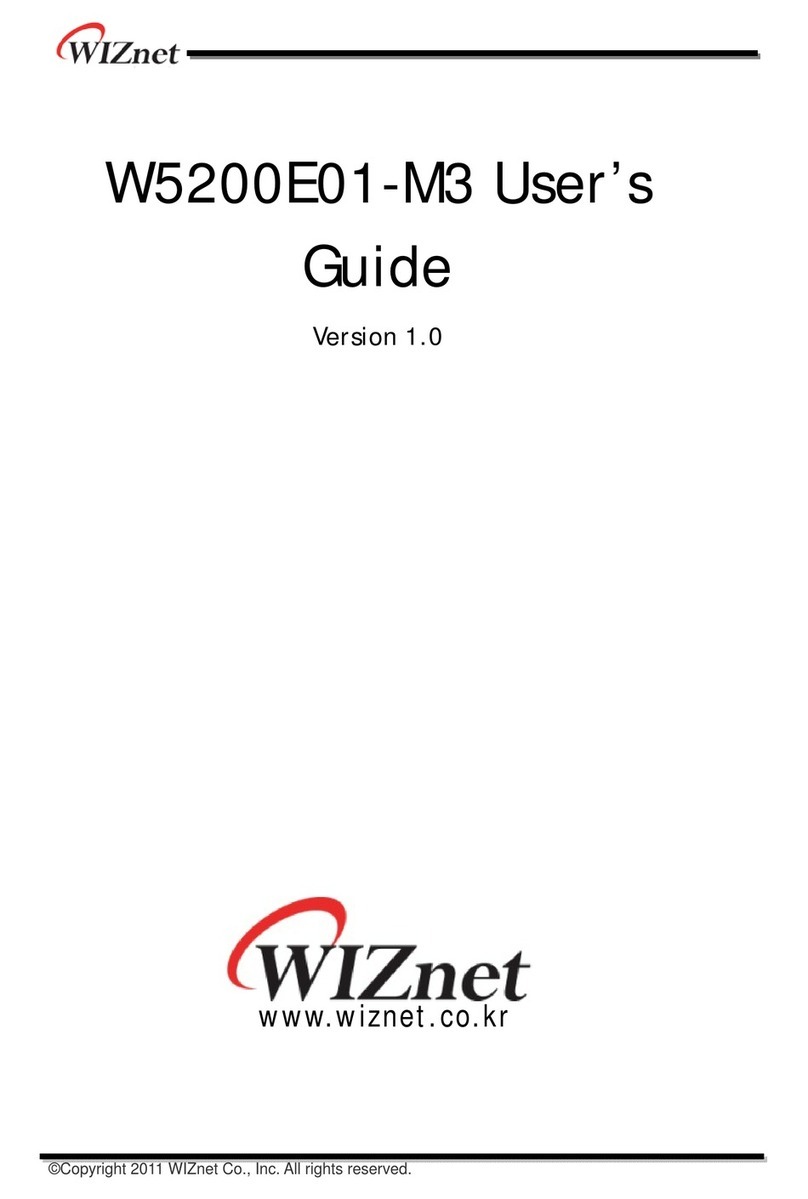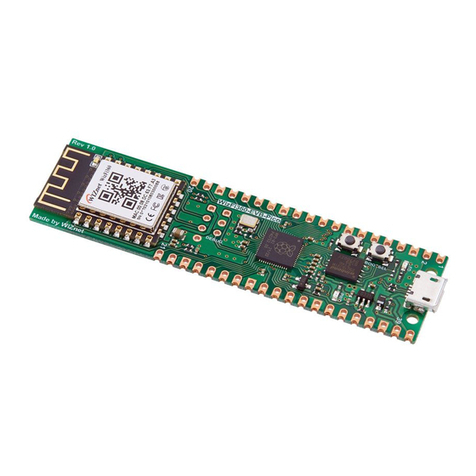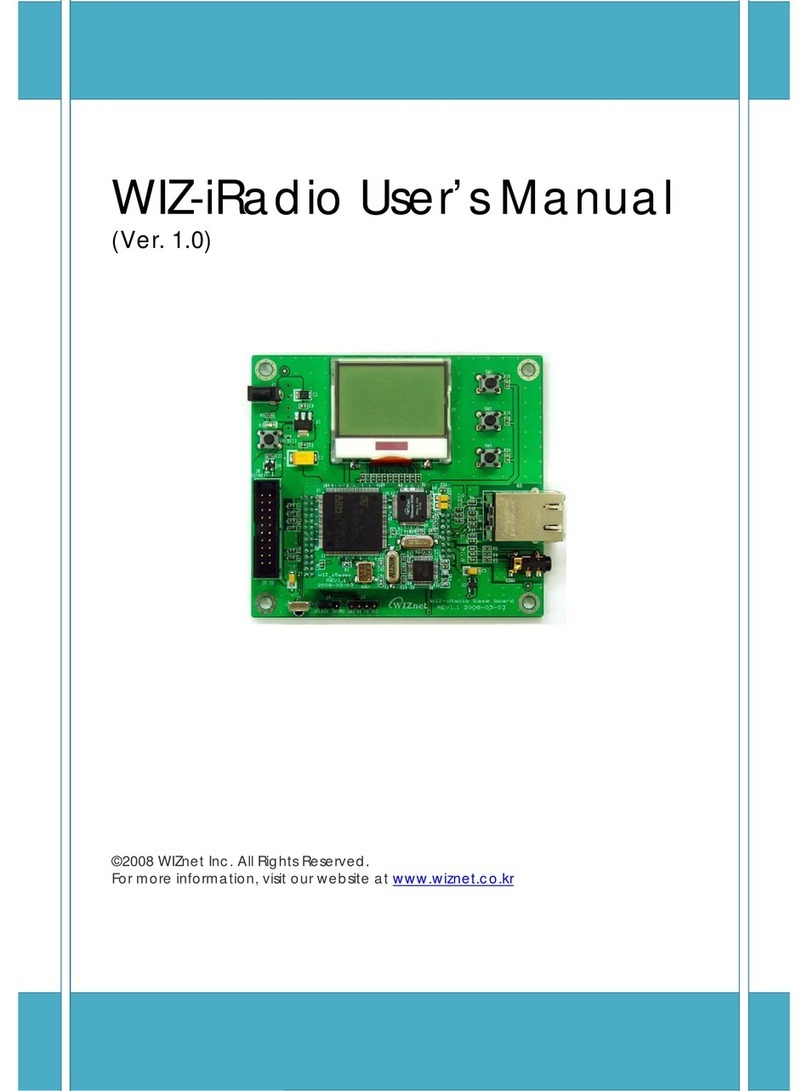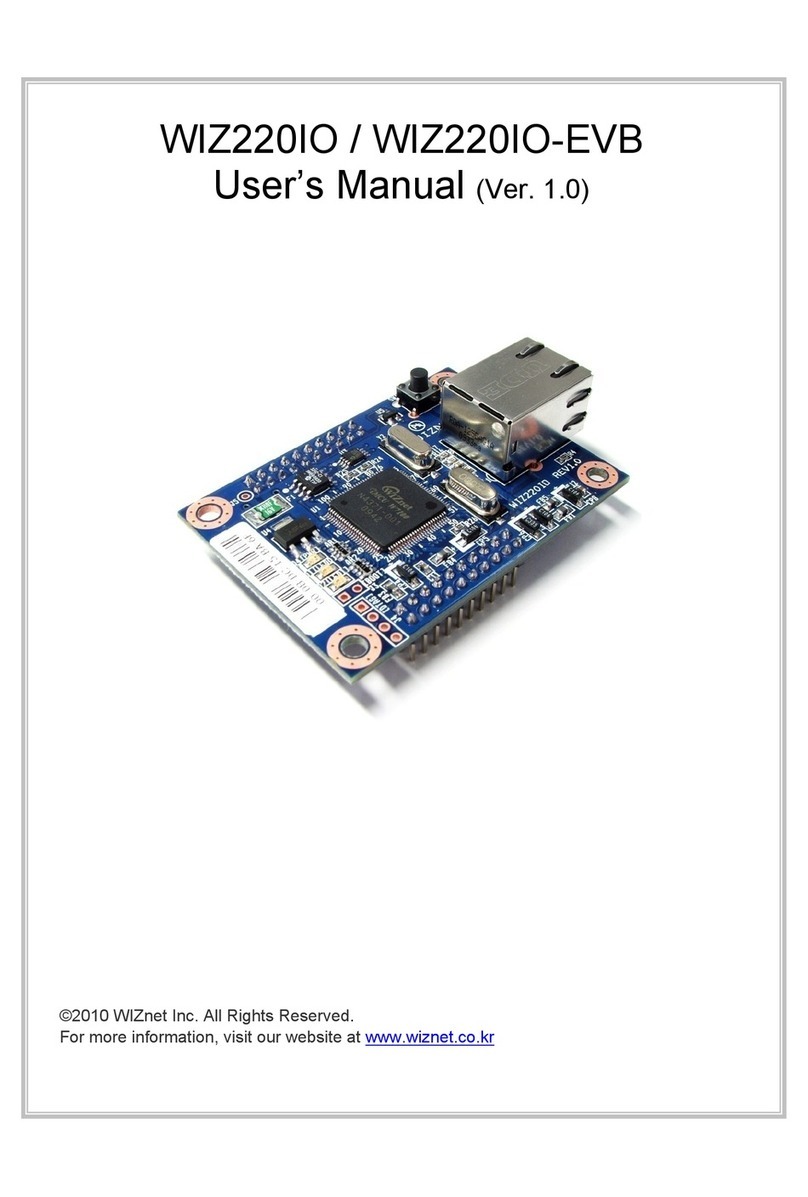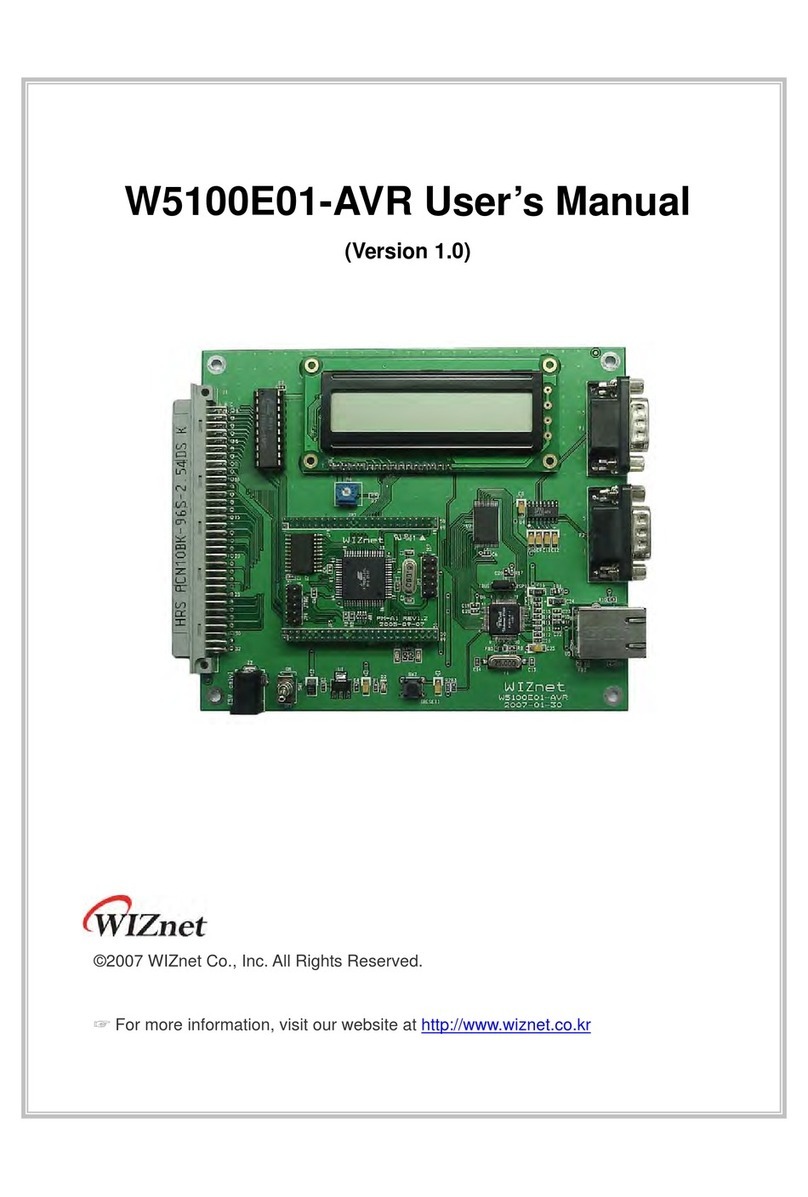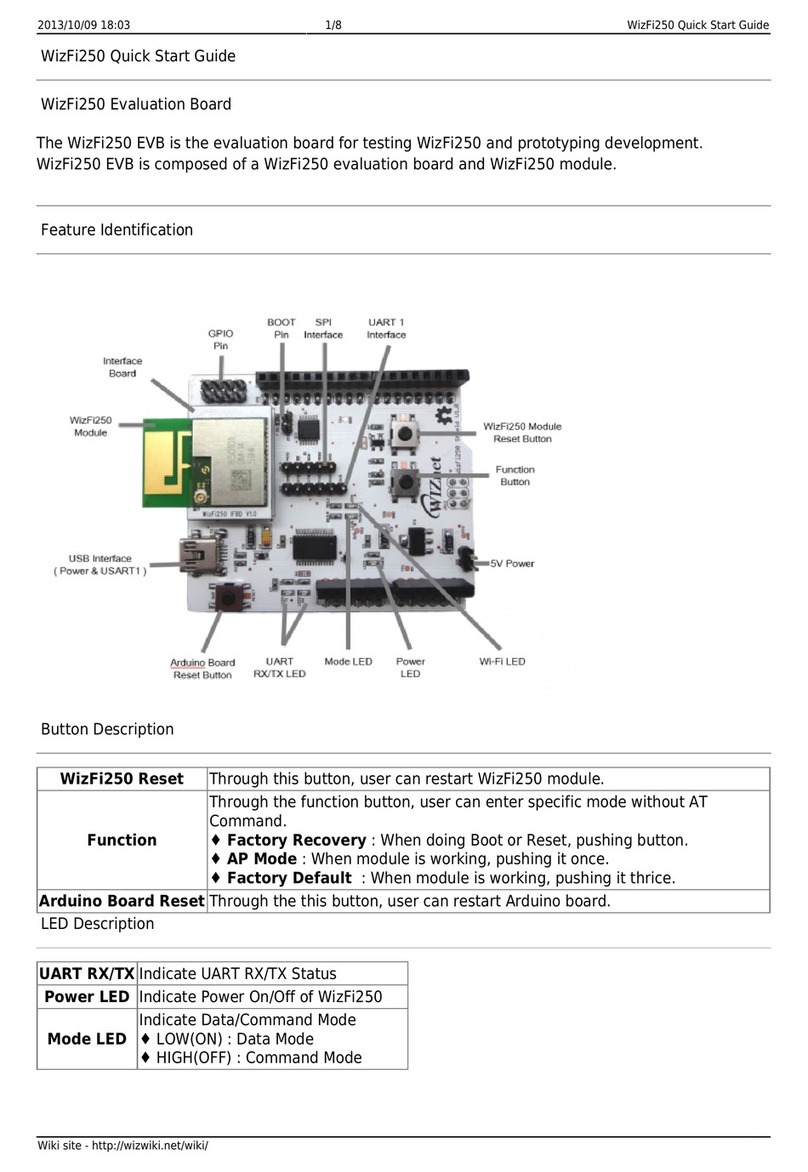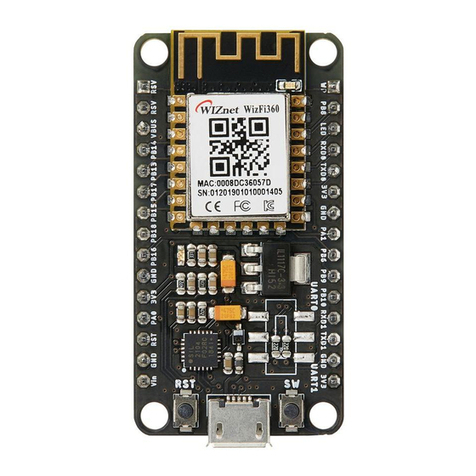Copyright 2021 WIZnet Co., Ltd. All rights reserved.
Table of Contents
1Document Information.......................................................................................................... 3
2Overview................................................................................................................................. 3
3Hardware Description............................................................................................................ 4
4Set up your Development Environment ................................................................................ 6
5Set up your hardware........................................................................................................... 15
6Setup your AWS account and Permissions......................................................................... 17
7Create Resources in AWS IoT............................................................................................. 18
8Provision the Device with credentials ................................................................................. 18
9Build the demo ..................................................................................................................... 19
10 Run the demo ....................................................................................................................... 19
11 Debugging ............................................................................................................................ 24
12 Troubleshooting................................................................................................................... 28
